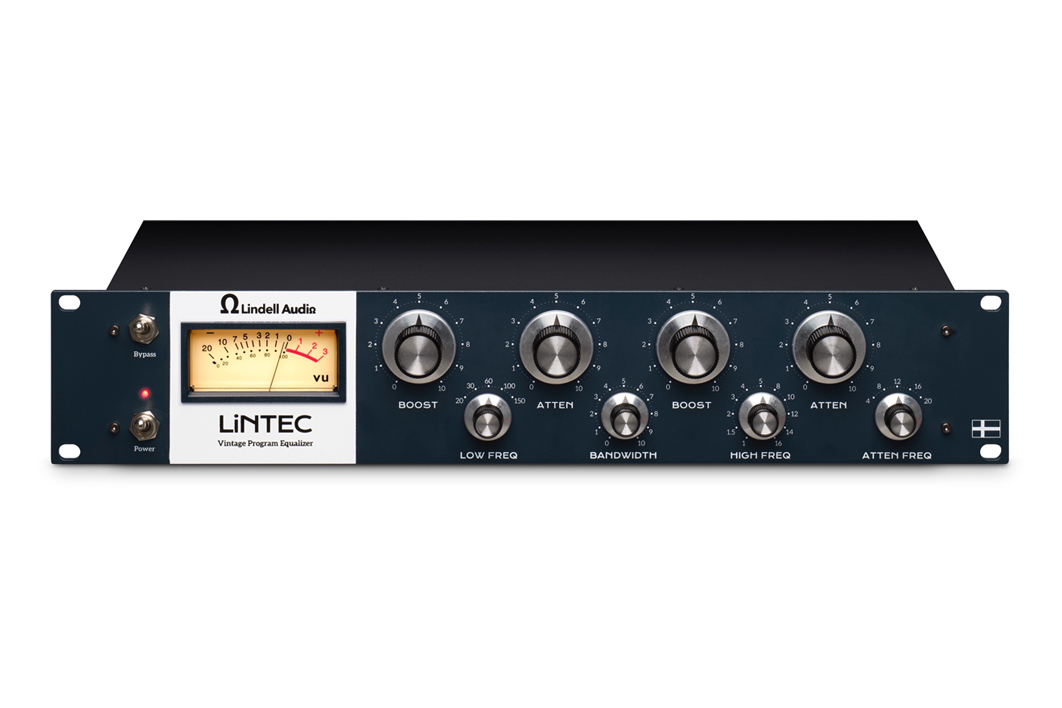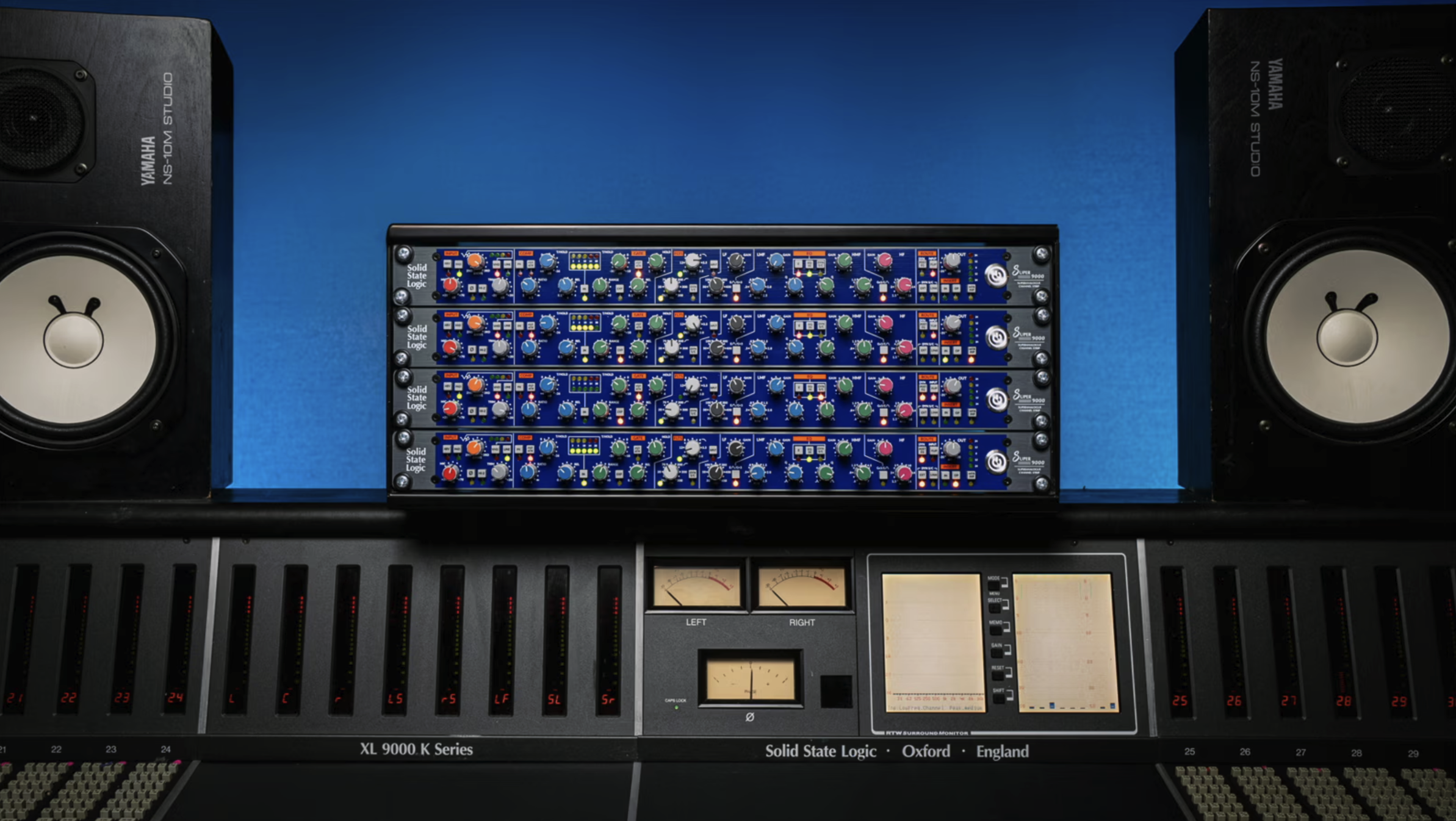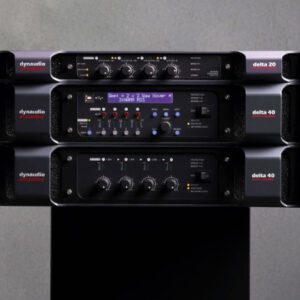
We only recommend products that we use and believe in. When you purchase through links on our site, we may earn an affiliate commission.
Introducing a modern take on the classic Pultec EQP-1A Program Equalizer
By bringing a much-lauded studio classic — conceivably the most renowned studio EQ ever known — home to smaller studio setups and larger recording studios alike, anyone can now get hands-on with classic Pultec-style workflow when sculpting their tracks, thanks to Lindell Audio’s timely LiNTEC introduction. Indeed, it is billed as being a Vintage Program Equalizer, as emphasised by the on point wording boldly blazoned below the VU (Volume Unit) meter dominating its beautiful blue front panel that, in turn, emphasises Lindell Audio’s Scandinavian heritage, courtesy of subtle front panel positioning of an adapted Swedish flag motif. Attractive as it is to look at, alluding — albeit applying a ‘modern’ minimalist Scandi touch — to the time-honoured aesthetics of the Sixties-vintage, prohibitively-expensive Program Equalizer from which it draws its inspiration, it is what it sounds like — making its musical mark by bringing air and space to vocals and stringed instruments, beefing up the low-end of kick drums, or adding a touch of warmth and weight to an entire bus — that clearly counts. It is fair to say, though, that anyone running their tracks through a LiNTEC will wonder how they got by with using software EQs for so long!
LiNTEC’s lean, old-school design offers a shared (five-step switched 20, 30, 60, 100, and 150 Hz) LOW FREQ (frequency) selection control for the associated BOOST and ATTEN (attenuation), alongside independent (11-step switched 1, 1.5, 2, 3, 4, 5, 6, 10, 12, 14, and 16 kHz) HIGH FREQ and (five-step switched 4, 8, 12, 16, and 20 kHz) ATTEN selections with a shared BANDWIDTH control. As a result, users can dial in the precise amount of tone-sculpting necessary to serve their track with no risk of muddying up the midrange. Moreover, LiNTEC’s stepped pots ensure easy recall and stereo matching when used in a stereo pair, while its filters are based on classic EQP-1A filters, complimented by Lindell Audio’s own new gain structure.
Speaking of choices, Lindell Audio broke with tradition by choosing a solid-state design over a tube-driven one. On record as professing its love for tubes as much as the next manufacturer, solid-state offered myriad benefits for LiNTEC that could not be had with tubes, such as a faster transient response with a smooth, creamy, and punchy character; lower noise than tube-based EQs; better unit-to-unit matching for stereo pairing — matched by hand to within ¼ dB of each other; and, obviously, no tubes to wear out and replace.
Turning to the op-amp applied to the LiNTEC design, it is the same proven OPA-171 — Lindell Audio’s take on the classic vintage Melcor 1731 op-amp — used in its 7X-500VIN ‘Vintage Edition’ 500-Series compressor and 77X-500 500-Series stereo compressor. Custom-designed transformers that are also central to making the LiNTEC Vintage Program Equalizer what it is have been created specifically for Lindell Audio.
And, yes, Lindell Audio’s LiNTEC is perfectly capable of pulling off the so-called Pultec low-end trick that has been used to fatten bass lines and kick drums on innumerable recordings; simply choose the desired LOW FREQ setting — try starting at 100 Hz, then simultaneously turn up both the associated BOOST and ATTEN controls to taste. As a historical side note, it is interesting to note here that original Pultec documentation asserted — admittedly rather bullishly, “Do not attempt to boost and attenuate simultaneously on the low frequencies.” Is it any wonder, then, that eager-to-know-why engineers did just that! The result of this simultaneous boost/cut operation is a low-end boost below the selected frequency, with a cut slightly above the selected frequency; in turn, this results in a satisfying-sounding thump and body that does not risk muddying the midrange — a not-so-secret trick of engineers and producers ever since those eager-to-know-why engineers first tried ignoring what they were told! Try doing that ‘for real’ with software EQs.
Electronics evidently has a lot to answer for, and by bringing the much-lauded studio classic home to smaller studio setups and bigger studios alike, anyone can now get hands-on with classic Pultec-style workflow when sculpting their tracks for a lot less than the price of other classic hardware EQs, thanks to Lindell Audio’s LiNTEC.
Last, but by no means least, the LiNTEC Vintage Program Equalizer is also useful for adding a touch of warmth and harmonic content to program material — even with its EQ set flat!
As a RAD Distribution company, Lindell Audio’s LiNTEC Vintage Program Equalizer is expected to ship in late-March/early-April 2024 with an MAP (Minimum Advertised Price) of $399.00 USD — RAD Distribution is also the exclusive North American distributor for Lindell Audio products (https://raddist.com/en/brands/lindell-audio) — and an SSP (Standalone Selling Price) of €532.00 EUR — including 19% VAT (Value Added Tax) — in the EU (European Union).
For more in-depth information, please visit the dedicated LiNTEC webpage here: https://lindellaudio.com/en/products/lintec
Watch Lindell Audio’s informative introductory LiNTEC video here: https://youtu.be/aYuL7_hgPpk



